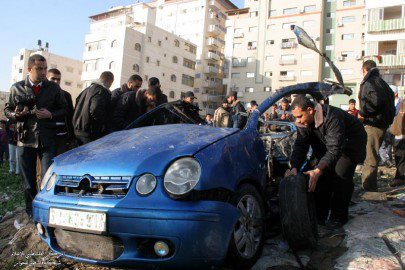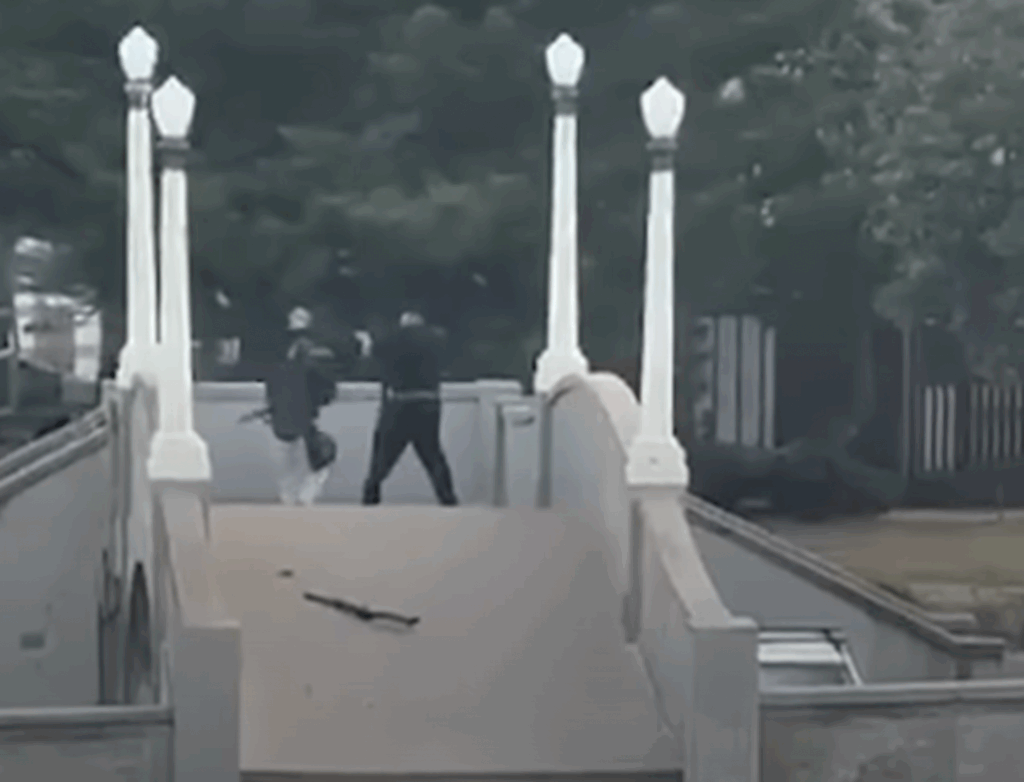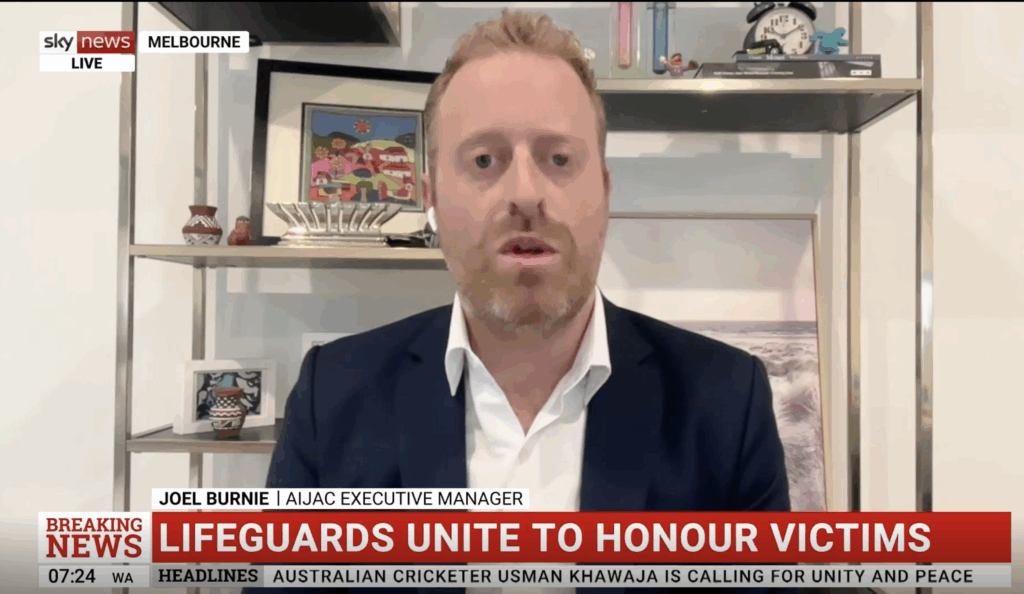UPDATES
The Latest Gaza Flare-Up
March 13, 2012

Update from AIJAC
March 13, 2012
Number 03/12 #04
This Update deals with background to and details of the intensive flare-up over the weekend around Gaza, which saw over 200 rockets fired into southern Israel from Gaza (sending up to 1 million Israelis into bomb shelters) and Israel staging numerous counter-attacks at terrorist targets and rocket sites which reportedly killed around 25 Palestinians, all but three of them armed combatants, according to Israel. The violence was triggered on Friday when Israel assassinated Zuhair al-Qaissi, the leader of the Popular Resistance Committees (PRC), and an assistant, who Israel said were planning attacks into Israel from Sinai.
A detailed, frequently updated summary of all news on the rocket attacks and Israeli strikes as put out by the IDF is here. Other summaries of the details – though not completely up to date – are here and here (the latter offers good summaries of the public reactions of various Palestinian factions.)
There are now reports that a tentative ceasefire has been brokered by Egypt, though rockets are continuing nonetheless to be fired into Israel.
First up is a general summary of why rounds of violence around Gaza like this one continue to happen (this is the fourth in a year) from David Horovitz, former Jerusalem Post editor, now at the new “Times of Israel” online publication. He notes that al-Qaissi made no secret of his activities, and the accusations that he was preparing a Sinai attack seems anything but far-fetched, especially since the Israeli government would certainly have known there were be retaliation in the form of rockets. He notes there is little sign Israel wants a repeat of Cast Lead, the 2008-2009 Gaza operation, with their focus on Iran and other issues at the moment, and also reminds everyone of Israel’s difficult history with Gaza since the complete pull-out from there in 2005. For all the background from Horovitz, CLICK HERE. Horovitz also had a further good article on why a ceasefire took a while to arrange.
Next up is an explanation of Israel’s pre-emptive policy with respect to terror attacks from security affairs writer Ron Ben-Yishai. He notes that al-Qaissi and the PRC are pioneers in the policy of targeting Israel via SInai, which serves the dual purpose of preventing another ‘Cast Lead” type counter-attack, and preventing Israel from striking back against operatives attacking from Egypt. The strike on al-Qaissi, Ben-Yishai explains, was part of an Israeli policy to strike at the initiators of such attacks when they are in Gaza, despite the likelihood of rockets in response. For more on why Israel views such preemption as necessary, CLICK HERE.
Finally, Ely Karmon of the Institute for Counter-terrorism looks at the current violence in the context of the current divisions between Hamas and Iran. He notes that much of the rocket fire was actually from Palestinian Islamic Jihad (PIJ), not the PRC, and PIJ is a direct Iranian proxy which Iran reportedly encouraged to attack on a large scale in order to destablise the region. Hamas, he notes, preferred to sit out that violence, encourage a ceasefire, and wait until its gets more support from the Muslim Brotherhood before engaging in major controntations with Israel. For this look at some of the regional dynamics behind the Gaza clash, CLICK HERE.
Readers may also be interested in:
- Israel’s “Iron Dome” rocket defence system reportedly performed well in the current conflict, intercepting around 90% of rockets targeted at built-up areas, though it did miss two which struck a neighbourhood of Beersheva just an hour apart.
- Some pieces on the strategic importance of “Iron Dome”, in the current conflict and for the future, are here and here.
- Israeli acadcemic Eyal Zisser argues that, even without the assassination of al-Qaissi, a major flare-up along Israel’s southern border was inevitable in the near future.
- In an ominous sign for the future, the majority Islamist Egyptian parliament passed a motion demanding a completely severing of all relations with Israel in response to the weekend violence.
- Israel maintained aid flows to Gaza throughout the weekend violence.
- The weekend’s violence prompts a review of the lessons of the 2005 Gaza evacuations for Israel from Jonathan Tobin.
- Israel’s newest cultural export : Rockin’ Puppets.
Beyond the Gaza headlines
Numbers, context and the choice now facing Hamas
By David Horovitz
Times of Israel, March 11, 2012
It’s a sequence that has played out, with minor variations, several times before.
Israel targets a Palestinian terror kingpin, acting on information that he is planning to orchestrate a major attack, but knowing that the act of thwarting him will likely prompt barrages of rockets aimed at towns and villages all over the south.
The rockets indeed start flying, the air force is dispatched again and again to stop the terror cells that are poised to fire still more salvos, and the Gaza death toll mounts.
Not so, mercifully, the toll on the Israeli side. The Gaza terror gangs are certainly trying, firing dozens of rockets. But Israel has alarm systems and protected rooms. It keeps its youngsters home from school. And it has the world’s foremost anti-missile defense systems.
So the numbers tell nothing like the full story. But the numbers – and the Gaza funeral scenes — are flashed around the world as the apparent barometer of proportionality, or rather disproportionality. And Israel finds itself on the defensive, accused of exaggerated use of force, even as it strives to keep its populace safe.
As so often in the past, what’s required to fairly assess the reasons behind the current Israel-Gaza flare-up is a smidgen of intellectual honesty, a glance beyond the headlines and the numbers.
Zuhair al-Qaissi, the leader of Gaza’s Popular Resistance Committees, made no secret of his activities. It was al-Qaissi, immediately after Gilad Shalit was released in an extortionate prisoner “exchange” last October, who gave interviews to the Arabic and international media detailing how his organization had kidnapped the Israeli soldier, interrogated him, resisted Israeli pleas for his release, and handed Shalit over to Hamas for five years of incarceration.
Al-Qaissi was also reportedly the man who oversaw the transfer of funds from Hezbollah in Lebanon to other extremist groups in Gaza.
Given those central roles, when the Israeli security establishment claims, as it did on Friday, that al-Qaissi was one of the planners of last August’s major infiltration by a group of terrorists – from Gaza, via the Sinai, and into Israel – in which eight Israelis were killed north of Eilat, the claim would seem anything but far-fetched. Likewise, when the Israeli leadership further declares, as it did this weekend, that it resorted to a targeted strike on al-Qaissi, with all the repercussions now being felt across southern Israel, because he was about to orchestrate another such major attack.
A glance beyond the headlines and the numbers would provide the reminder that Israel has no military or civilian presence whatsoever in the Gaza Strip – no territorial dispute. Wrenching thousands of civilians from their homes, Israel withdrew entirely from the Strip in 2005. The last Israeli who we knew was living in Gaza was Shalit.
After the 2005 disengagement, the Palestinians could have rehoused Gaza’s refugees – there was no reason not to; the occupation was over – but they preferred to keep that wound open. They could have started building a mini-democracy in Gaza – if only to try to persuade an uncertain Israel that it could safely relinquish territory in the West Bank. But all-too evidently, not even the potential prize of territorial concessions in the West Bank was sufficiently compelling.
Instead, the greenhouses that had flourished in the Gaza settlements and could have flourished under Palestinian control were gleefully smashed, Hamas violently took power in 2007 after winning Palestinian parliamentary elections in 2006, and the rocket and mortar fire continued almost without interruption. In the period before al-Qaissi was killed, barely a day went by without a rocket salvo being fired into Israel; these attacks didn’t make headlines because they didn’t kill Israelis.
When the IDF’s chief of the General Staff Benny Gantz said on Sunday that “Israel is not interested in escalation for the sake of it” in Gaza, that sounds credible, too. There had been no indication in recent weeks that the IDF was planning a repeat of the winter 2008-2009 Operation Cast Lead assault on Hamas. Israel has plainly been focused elsewhere – on Iran’s drive to the bomb, on the uncertainties in Egypt, on Bashar Assad’s daily massacring of his own people in Syria.
Nonetheless, seven years after it left Gaza, Israel is up against a leadership there that has exploited every opportunity to arm itself with only one enemy in mind – Israel – and to improve the capacity of its rockets to harm Israeli civilians. Sooner or later, therefore, Gantz and other Israeli leaders have said in recent months, Israel may have to resort to another ground offensive.
Whether that time is now may depend on Hamas. Will it decide to join the PRC and Islamic Jihad in firing rockets into Israel — and, remember, Hamas has Fajr missiles that can get to Tel Aviv, which would radically change the nature of this flare-up. Or will it stay away from a direct role and instead work toward a ceasefire? As of Sunday evening, the signs were pointing to the latter.
Back to Top
————————————————————————
Israel’s pre-emptive policy
Analysis: IDF prepared to kill terror masterminds even if assassinations prompt rocket barrages
Ron Ben-Yishai
Ynet.com 03.10.12, 10:53
The targeted assassination in Gaza Friday was meant to avert or at least disrupt a terror attack being prepared in the Sinai. Zuhir al-Qaisi headed the political wing of the Popular Resistance Committees and personally planned a complex offensive meant to be carried out via Sinai. According to intelligence information, the terror offensive was to apparently include infiltration into Israel at several sites, the planting of explosive devices, and a possible abduction.
The Popular Resistance Committees, just like other Gaza groups – headed by Hamas and Palestinian Islamic Jihad – exploit the Egyptian chaos in Sinai and the willingness of the Bedouins to carry out attacks based on ideological and religious motives or for money. These terror groups are also trying to prevent a major IDF response in Gaza similar to operation Cast Lead. Terrorist organizations know that the IDF is preparing such operation and therefore prefer not to provoke Israel directly from the Strip.
Sinai-based attacks grant terror groups another advantage – they estimate that the IDF would not enter Egyptian territory in order to thwart such offensives.
Lesson learned
Al-Qaisi was among the initiators of the latest attack. The decision to target him is part of the IDF’s policy to hit the masterminds of attacks originating in the Sinai even when these terror leaders are in the Gaza Strip. This policy stems from the events that preceded the terror offensive in August 2011 that claimed the lives of eight Israelis in the south.
Back then, the Shin Bet had intelligence information regarding the plans of Popular Resistance Committees’ leaders, yet officials decided not to target the group’s leaders. In retrospect, it turned out to be a mistake. Such operation could have averted the murderous attack.
We should keep in mind that the Popular Resistance Committees possess long-range missiles that can reach the outskirts of central Israel. However, we can assume that IDF officials took this into account when issuing the order to assassinate al-Qaisi.
Back to Top
————————————————————————
Iran-Hamas crisis and the present violence flare in Gaza
Ely Karmon
Institute for Counter-Terrorism, 12/03/2012
The present flare of violence on the Israeli-Gaza border began after an Israeli air-strike killed Zuhair al-Qaisi (Abu Ibraim), secretary-general of the Popular Resistance Committees (PRC). Another senior PRC leader, Ahmad al-Khanini, was also killed. He was freed from a prison in Israel last year in the exchange for Israeli soldier Gilad Shalit.
Al-Qaisi’s targeted killing was decided after the Israeli intelligence learned he was preparing a major terrorist attack in Israeli territory through the Sinai Peninsula, similar to the terror attack of 18 August 2011, when 8 Israelis were killed and 30 wounded (See “The Popular Resistance Committees: Portrait of the Terrorist Organization Responsible for the Series of Combined Terrorist Attacks North of Eilat, Israel’s Southernmost City,” at http://www.terrorism-info.org.il/malam_multimedia/English/eng_n/html/ipc_e218.htm) .
The killing of Al-Qaisi provoked immediately the retaliation by the PRC in the form of a barrage of more than 150 Grad and Qassam missiles reaching the southern Israeli cities of Beer-Sheva, Ashkelon and Ashdod and other minor towns and villages.
The interesting thing is that the Palestinian Islamic Jihad (PIJ) intervened immediately to support the PRC fighters and actually most of the fired long range missiles, and also most of the 18 killed Palestinian militants, belong to this organization. The PIJ is known to be a proxy of the Tehran regime and aligned to it on the ideological level. The PIJ, and the PRC, have received during the last year heavy weapons, including long-range missiles, from Iran.
According to the Israeli Army’s Spokesman Brig.-Gen. Yoav Mordechai, Iran is encouraging the PIJ to continue firing rockets against Israel.
Hamas for the moment did not intervene in the fighting. Moreover, Hamas is actively trying to get Egypt to broker a cease fire and a high-level Hamas delegation headed by Musa Abu Marzouk and Mahmoud Zahar arrived in Cairo for this purpose. The efforts came as various Palestinian groups in the Gaza Strip announced that they would abide by a new cease-fire with Israel.
The current round of fighting is still continuing and will probably take several more days to achieve a cease-fire.
The reaction of the various players in this event should be analyzed in the framework of the regional situation and the quickly shifting alliances .
Tehran fears that the “Tehran-Damascus resistance axis” might crumble as a result of the grave situation of the Assad regime and the loss of Tehran’s influence over its proxies, especially Hamas. The Hamas – Fatah agreement of February 6, 2012 in Doha to form a national unity government headed by Palestinian Authority President Mahmoud ‘Abbas, the withdrawal of Hamas leaders from their headquarters in Damascus, and the statements by the head of the Hamas administration in Gaza, Isma’il Haniya, on February 24, in support of the anti-Assad rebels in Syria prompted Tehran to warn the Hamas leadership against abandoning the path of “resistance.”
On this issue see the detailed analysis by A. Savyon & Y. Mansharof, “Iran-Hamas Crisis: Iran Accuses Hamas of Relinquishing the Path of Resistance,” at MEMRI’s website http://www.memri.org/report/en/0/0/0/0/0/0/6158.htm. (Sorry for duplicates).
Hamas prefers these days to rely on the new military sponsored government in Egypt and wait for the Muslim Brotherhood impose a more Islamist regime, after the presidential elections in July 2012 and the drafting of a new constitution. At that moment Hamas will have the backing of its sister organization in case of a serious crisis with Israel.
According to Palestinian-Jordanian scholar and political columnist Rami Khouri, “Hamas’ reversal on Syria is an important example of how Islamist groups continue to make the transition from their previous world of abstract political opposition and often bloody and costly resistance to the new environment in which they must grapple more convincingly with real-world conditions and options, especially the advent of populist legitimacy and accountability in Arab countries.” See his interesting article “Hamas rattles the resistance front” at http://en.ammonnews.net/article.aspx?articleNO=15944.
The PIJ obviously is serving the Iranian interests in trying to destabilize the region, especially vis-à-vis Egypt, and at the same time trying to present itself as the true defender of the Palestinian people’s interests.
Israel is extremely worried that Sinai could become the new platform for Palestinian terrorism from Gaza, possibly allied with al-Qaeda and Egyptian Salafist elements. Military strikes against terrorists in Egyptian territory, not sufficiently secured by its authorities, could seriously endanger the already sensitive relations with Egypt and limit Israel’s margin of maneuver against terrorism activity from Gaza. The present operation should thus try to dissuade the Palestinian terrorist groups from using the Sinai and convince them that they will pay for such activities in Gaza itself.
Dr. Ely Karmon is a Senior Research Scholar at the Institute for Counter-Terrorism in Herzliya, Israel.
Tags: Israel





